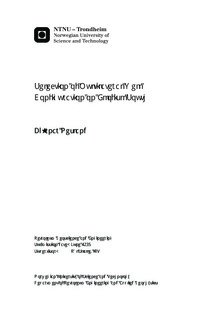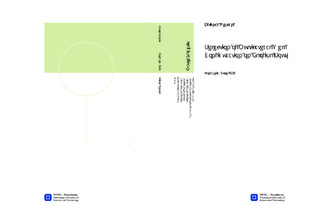| dc.description.abstract | In 2004 ConocoPhillips Norway (COPNO) drilled two multilateral wells in the Ekofisk field in the North Sea. These wells yielded more stable production rates, but had several issues and challenges when it came to junction stability and access to the side-branch. Due to matters related to the reservoir performance and the production rates, as well as optimized utilization of the slot spaces, the drilling of multilateral wells again has been listed as a possible future strategy for COPNO .
In this Master Thesis three different multilateral well options, each with a mainbore (Lateral 1) and a side-branch (Lateral 2), for the Ekofisk South area has been evaluated in order to select the optimum configuration for a possible future implementation, based on six given reservoir targets. A project scope was established, including suggestion of junction design, junction placement and well paths. Further were physical limitations and technical challenges related to the drilling of multilateral wells on Ekofisk mapped, before a simulation base representing Ekofisk South was created in the Wellplan software. Based on the results from the simulations, an evaluation of the different multilateral well technology (MLT) options were performed, and a selection of the optimum multilateral well configuration on Ekofisk South for future success optimization with regards to the drilling process was executed.
The report concludes that recommended type of multilateral for Ekofish South, based on the reservoir targets given, is the planar dual-lateral, or forked, multilateral. The junction should be placed in the overburden, 200 ? 300 ft above the top of Ekofisk in a stable formation. Of the investigated three MLT options the MLT1 configuration indicates highest possibility of future success with regards to the drilling process. Further, a recommended composition of separate wellbores to form a new MLT option would include lateral 1 from MLT1, the 9 ½? lateral 2 section from MLT2 and the 8 ½? lateral 2 section from MLT1. A trend was that that the longer wellbores indicated more issues, and that optimization of the well paths for the wellbore sections leading to the reservoir targets for the MLT options should be performed in order to mitigate any challenges with regards to elevated ECD effects.
Future improvements involve the implementation of actual underground data to the simulation base, and an optimization of both the well paths and the BHA design used in the simulations. Simulations on junction design option 1, as well as investigations on the effects related to under reaming of the 8 ½? and the 9 ½? hole sections to 9 ½? and 10?, respectively, summarize the most important suggestions of further work in the field. | |

